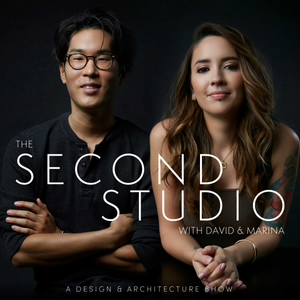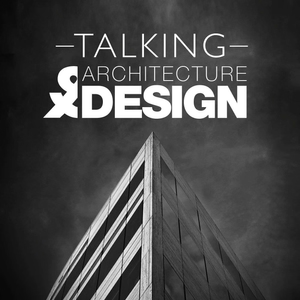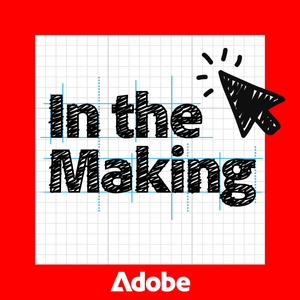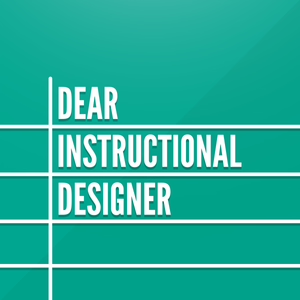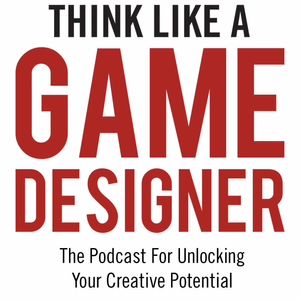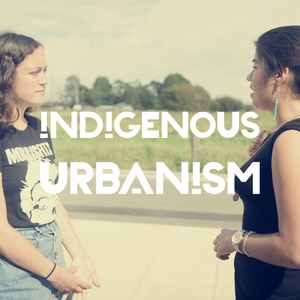
In Conversation with Cheyenne Thomas
11/22/18 • 18 min
EPISODE SUMMARY: On this episode of Indigenous Urbanism, we speak with Cheyenne Thomas, an architectural designer from Peguis First Nation, about her work with First Nations communities in Manitoba, and her role as a designer and advocate.
GUESTS: Cheyenne Thomas
FULL TRANSCRIPT:
Jade Kake v/o: Tēnā koutou katoa
Nau mai haere mai ki te Indigenous Urbanism, Aotearoa Edition, Episode twenty-three.
I’m your host Jade Kake and this is Indigenous Urbanism, stories about the spaces we inhabit, and the community drivers and practitioners who are shaping those environments and decolonising through design.
On this episode of Indigenous Urbanism, we speak with Cheyenne Thomas, an architectural designer from Peguis First Nation, about her work with First Nations communities in Manitoba, and her role as a designer and advocate.
Cheyenne Thomas: I am Anishanaabe, Ojibwe, that's my tribe. From Manitoba, Canada. I grew up in Winnipeg, my whole life, and my family is from Peguis First Nation and Saugeen First Nation, and I'm a designer in architecture, and I also do installations at a bigger scale with my father, who's also a designer. The focus is Indigenous design, and so that's who we try to work with.
JK: So we were really excited to meet you this time two years ago, when you and your dad came over, and you met all of us, this Ngā Aho crew, and we started this awesome journey together. But it was really exciting for me just to meet another young woman just smashing it. And then we went over to see you again last year. And so, I just wanted to maybe ask you a little bit about your practice and projects over back home, and what are some of things you're working on, and how have you kind of connected that with some of the exchange and experiences we've had?
CT: Okay, so, I did two buildings with my dad, we designed. They're 75,000 square foot buildings for two different First Nations in Manitoba. That was in the process when we met, two years ago. From that, we worked on the Assiniboine Park, revitalisation of the whole park, which is 1,000 acres in mass. They have a massive building, and a couple gardens. Part of it was to have an Indigenous garden, where they brought me and my dad on as lead designers. From when we did meet at the last hui, there was, it was more than just a conference, it was more people together, not so formal, where we could really connect without the labelling of architect, landscape architect, industrial designer. Where you actually have a collective of people just kind of supporting you, and from that there was different things we did during the conference, like sing songs, eat together, feast together, sleep together in the same marae. So for the Assiniboine Park I tried to architect the process, where we consulted with my community, our communities in Manitoba. So I got them to, I brought singers in, I brought food in as a component, to eat together, have discussions while you're nourishing your body. And those are all inspired by my experience at the last hui.
JK: I'm hearing that community-based process is really important, and the way we kind of bring in our own cultural lens and way of doing and being into that process with our communities. What was the process of engagement for that community project? How did that come about, actually?
CT: So that project, it actually, that park has been there for hundreds of years. And it's a European park. So they wanted to revitalise it, and they had the big building, designed by KPMP in Toronto, and they also had a couple gardens. The head of the park went to a community presentation, and this one Native girl said, I do not see myself in this park at all. So, she took, that was a pivotal moment for her, in the project. And for the Indigenous gardens, knew that was really important to have Indigenous designers. So, approached my dad and I, to start discussing and imagining this process of bringing our people into this consultation process.
JK: Now you talked about your dad a bit, and so it's pretty amazing the two of you work together quite closely on a lot of projects. Was your dad a big part of the reason why you got into architecture, or what kind of led you into architecture?
CT: I guess I was exposed to architecture, not just architecture, I was exposed to design, creativity, the whole creative process. Which at the time was not named the creative process. It was just exploring different ways of expressing building, and moving things around, creating or designing your own spaces to excite your childhood imagination, right? So I grew up with having that. Big pads of paper to draw on, this very loose way of moving around, and expressing yourself. So when I got older, went to University, all these courses I took. They weren't as exciting to me, they seemed very, not that there's anything wrong with those, I just grew up a totally different way, ...
EPISODE SUMMARY: On this episode of Indigenous Urbanism, we speak with Cheyenne Thomas, an architectural designer from Peguis First Nation, about her work with First Nations communities in Manitoba, and her role as a designer and advocate.
GUESTS: Cheyenne Thomas
FULL TRANSCRIPT:
Jade Kake v/o: Tēnā koutou katoa
Nau mai haere mai ki te Indigenous Urbanism, Aotearoa Edition, Episode twenty-three.
I’m your host Jade Kake and this is Indigenous Urbanism, stories about the spaces we inhabit, and the community drivers and practitioners who are shaping those environments and decolonising through design.
On this episode of Indigenous Urbanism, we speak with Cheyenne Thomas, an architectural designer from Peguis First Nation, about her work with First Nations communities in Manitoba, and her role as a designer and advocate.
Cheyenne Thomas: I am Anishanaabe, Ojibwe, that's my tribe. From Manitoba, Canada. I grew up in Winnipeg, my whole life, and my family is from Peguis First Nation and Saugeen First Nation, and I'm a designer in architecture, and I also do installations at a bigger scale with my father, who's also a designer. The focus is Indigenous design, and so that's who we try to work with.
JK: So we were really excited to meet you this time two years ago, when you and your dad came over, and you met all of us, this Ngā Aho crew, and we started this awesome journey together. But it was really exciting for me just to meet another young woman just smashing it. And then we went over to see you again last year. And so, I just wanted to maybe ask you a little bit about your practice and projects over back home, and what are some of things you're working on, and how have you kind of connected that with some of the exchange and experiences we've had?
CT: Okay, so, I did two buildings with my dad, we designed. They're 75,000 square foot buildings for two different First Nations in Manitoba. That was in the process when we met, two years ago. From that, we worked on the Assiniboine Park, revitalisation of the whole park, which is 1,000 acres in mass. They have a massive building, and a couple gardens. Part of it was to have an Indigenous garden, where they brought me and my dad on as lead designers. From when we did meet at the last hui, there was, it was more than just a conference, it was more people together, not so formal, where we could really connect without the labelling of architect, landscape architect, industrial designer. Where you actually have a collective of people just kind of supporting you, and from that there was different things we did during the conference, like sing songs, eat together, feast together, sleep together in the same marae. So for the Assiniboine Park I tried to architect the process, where we consulted with my community, our communities in Manitoba. So I got them to, I brought singers in, I brought food in as a component, to eat together, have discussions while you're nourishing your body. And those are all inspired by my experience at the last hui.
JK: I'm hearing that community-based process is really important, and the way we kind of bring in our own cultural lens and way of doing and being into that process with our communities. What was the process of engagement for that community project? How did that come about, actually?
CT: So that project, it actually, that park has been there for hundreds of years. And it's a European park. So they wanted to revitalise it, and they had the big building, designed by KPMP in Toronto, and they also had a couple gardens. The head of the park went to a community presentation, and this one Native girl said, I do not see myself in this park at all. So, she took, that was a pivotal moment for her, in the project. And for the Indigenous gardens, knew that was really important to have Indigenous designers. So, approached my dad and I, to start discussing and imagining this process of bringing our people into this consultation process.
JK: Now you talked about your dad a bit, and so it's pretty amazing the two of you work together quite closely on a lot of projects. Was your dad a big part of the reason why you got into architecture, or what kind of led you into architecture?
CT: I guess I was exposed to architecture, not just architecture, I was exposed to design, creativity, the whole creative process. Which at the time was not named the creative process. It was just exploring different ways of expressing building, and moving things around, creating or designing your own spaces to excite your childhood imagination, right? So I grew up with having that. Big pads of paper to draw on, this very loose way of moving around, and expressing yourself. So when I got older, went to University, all these courses I took. They weren't as exciting to me, they seemed very, not that there's anything wrong with those, I just grew up a totally different way, ...
Previous Episode

Ōtautahi Revealed Pt 2
EPISODE SUMMARY: In part two of our story on the Ōtautahi rebuild, we look at the work of Ngāi Tahu and Regenerate Christchurch to develop alternative uses for the residential red zone area to the east of the City, including the re-establishment of biodiversity and food gathering areas.
GUESTS: Teoti Jardine, Hugh Nicholson, Debbie Tikao, Te Marino Lenihan, Evan Smith
FULL TRANSCRIPT:
Jade Kake v/o: On September 4th 2010, February 22nd 2011, and many occasions afterwards, major earthquakes shook the city of Christchurch, allowing the old wetlands to temporarily re-establish themselves, and leaving swathes of land, especially to the east of the city, uninhabitable.
After its century-old Treaty of Waitangi claim was settled in 1999, Ngāi Tahu made quick work of restoring its political, cultural, and economic influence. However, Christchurch remained visually and culturally dominated by English aesthetics and values.
What’s happening in Christchurch today may be a world first situation, and in the wake of a devastating natural disaster, the local indigenous people are involved in the redesign of a city from the highest governance level right through to the actual physical reconstruction.
Teoti Jardine: The empty places behind you, and the empty places where we were, they were filled with street after street of empty houses. The people had gone, their houses were there waiting to be demolished. And it was coming up to our Matariki celebration, that was over in our other little area which was a Council playground. Where for the first time after the earthquakes, people were coming to plant again, and to reconnect with the land. So, now, I'll shut up and tell you.
It's called Rezoned.
Empty breezes wander streets
Where the windows of silent houses
Gaze without any expectations
There was no time for farewells
Only the hurried leavings
Come quickly, don't turn back
Nothing is left here now
Yet, around abandoned playgrounds
Children's laughter lingers
Making the invitation, to come
Grow, plant, forage
Among the stories of those who stayed
Singing, swimming, roosting
Through sunshine, rains and mist
Filling the breezes with hope
Kia ora koutou.
JK v/o: Tēnā koutou katoa
Nau mai haere mai ki te Indigenous Urbanism, Aotearoa Edition, Episode twenty-two.
I’m your host Jade Kake and this is Indigenous Urbanism, stories about the spaces we inhabit, and the community drivers and practitioners who are shaping those environments and decolonising through design.
On this episode of Indigenous Urbanism, part two of our story on the Ōtautahi rebuild, we look at the work of Ngāi Tahu and Regenerate Christchurch to develop alternative uses for the residential red zone area to the east of the City, including the re-establishment of biodiversity and food gathering areas.
TJ: Tēnā koutou katoa, Ko Teoti Jardine ahau, Ko Waitahi, ko Kati Mamoe, ko Kai Tahu oku iwi.
JK v/o: That was Teoti Jardine. Teoti is a poet from Ōtautahi and a kaumātua for the Avon-Ōtākaro network.
TJ: It wasn’t long, that in my connection with the red zone, that I realised I'm walking through the memories and the stories of my Waitaha, Kati Mamoe, Kai Tahu tūpuna. Who came here for hundreds of years gathering food, and gathering resources and teaching their children how to do this mahi. And, when they did this, they came and they greeted the rivers, they greeted the land, and the land nourished them, and their greetings nourished the land. And for me, those memories, those stories of my tūpuna, are in this land. And whatever happens to the red zone, those memories and those stories need to be honoured in whatever way it's possible. We've just seen how some of these stories can be honoured in the city. The red zone is a clean slate. No-one knows quite what to do with it. But for me, it's a place that holds those memories from hundreds of years ago, and those stories from hundreds of years ago. And they feel, now with my connection to the red zone, they feel like they are my memories now. And they are my stories. And whatever happens in the red zone, I would like to see some honouring of what those stories are. My tūpuna, my ancestors, we were the first ones to be red zoned. When the settlers came we had to move, and now they came and they built in the place where, our old people said why are they building here? This was our food basket. But, oh no, we'll drain it and build houses. Well, you can see what happened. And, for me, Ruaumoko has returned the land to us, and given us the opportunity to allow the land to return to its original purpose, which was a mahika kai, a place where we gathered food. We’ve seen downtown how those reflections of our tūpuna are happening now. They weren't there before the earthquake. So, honestly, the earthquake has given us this opportunity to place o...
Next Episode
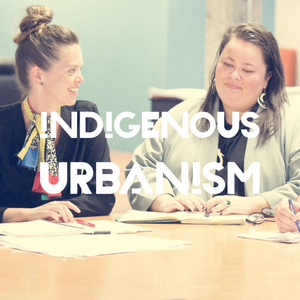
Te Mana o te Wāhine
EPISODE SUMMARY: On this episode of Indigenous Urbanism, we speak to two visionary young practitioners about the role of Māori women in shaping our physical environments, and the issue of diversity within our professions.
GUESTS: Te Warihi Hetaraka, Elisapeta Heta, Haley Hooper
FULL TRANSCRIPT:
Modern Māori Quartet (Māreikura): Mā te wāhine, mā te whenua, ka ora ai te tangata. Wāhine. Māreikura.
Te Warihi Hetaraka: At the root, at the core I think, of that understanding of it, is the understanding of mana wāhine. Mana wāhine under the korowai of Māreikura. Cause I think with colonisation, we've gone away from that understanding. And when our wāhine suffer, then we all suffer. and it's simply because we've gone away from that understanding, of the mana that our wāhine carry. We've gone completely away from that. And that's one of the tracks, that's one of the pathways that we need to establish first. Begin respecting the nurturers of our future. The first teachers, of our future, of our children. That has to be re-established, that understanding needs to be established, before we can even look at anything else. We come back again to the wahine. When the child is born, it's one of the most sacred moments of this planet. The birth of the child is the assurance of our future. Right here. And yet we've torn ourselves and our umbilical cord is sliced, is cut. The pito connects with Rangi and mother earth. So we've got to get back to that imagery. The moment you stop suckling from the breast of our mother, you suckle at the breast of Papatūānuku. So we've got to get back into that psychology.
JK v/o: That was tohunga whakairo Te Warihi Hetaraka, nō Ngāti Wai. As Māori, we hold clear beliefs about the status and sanctity of women.
Te Warihi’s whakaaro led me to reflect - how might our cultural attitudes towards women inform and direct the relationships that we have - with our environment? And what then, might be the role of wāhine Māori in shaping those environments?
Tēnā koutou katoa
Nau mai haere mai ki te Indigenous Urbanism, Aotearoa Edition, Episode 24.
I’m your host Jade Kake and this is Indigenous Urbanism, stories about the spaces we inhabit, and the community drivers and practitioners who are shaping those environments and decolonising through design.
On this episode of Indigenous Urbanism, we examine the role of Māori women in shaping our physical environments. We speak with two young wahine Māori practitioners - Elisapeta Heta, an architectural graduate from Ngāti Wai, and Haley Hooper, an urban designer from Ngāti Hau - about the thorny question of diversity within our professions. Both Elisapeta and Haley have featured on previous episodes on this season of Indigenous Urbanism, so do check those out.
My first guest for this episode is Elisapeta Heta. Elisapeta is previous Co-Chair of Architecture Women, and the current Ngā Aho representative to the NZIA board, a role that was established through the Kawenata. There are very few Māori women in architecture, and even fewer Māori women who are registered architects. I asked Elisapeta - Why are the numbers so low? Why is it important to increase diversity across our industry? and How do we get there?
Elisapeta Heta: From a representational point of view, which is something you touched on slightly, yeah, wow. I don't know that I have an easy answer around why there aren't many Māori in the profession. I can hazard a guess. And it's kind of partly based on, I suppose, anecdotal evidence, partly based on what I can see and observe myself, and partly through university as well, like the sorts of conversations I was having while I was a tuakana mentor at the University of Auckland. So, it seems like, and you can see this in some of the Pacific communities, the arts is, or hasn't necessarily historically been seen as a viable place to go. If you're going for higher education, you wanted to get thrown into law, and business, and medicine, and all the things that are seen as quite tangibly good careers. Architecture's a bit of an unknown. It's sort of seen as a little bit creative, some can see it as having links to engineering, but I think it's a little bit of an anomoly to our communities to some degree. But also I think it's something we just do inherently, all as humans, not just Māori and Pasifika, but all as humans, having housing housing is so fundamental to our ability to live. So, it baffles me as well. To some degree it's like, it's not necessarily seen as a career path, but it's so important to our sovereignty.
JK: So part of it might be just the way the profession is communicated, so that it can be understand and be seen as relevant, which it obviously is.
EH: Yes. And to not speak on behalf of anybody else but myself, it wasn't until I started university that I saw how much the profession looked nothing like me. And in no way represented...
If you like this episode you’ll love
Episode Comments
Generate a badge
Get a badge for your website that links back to this episode
<a href="https://goodpods.com/podcasts/indigenous-urbanism-68738/in-conversation-with-cheyenne-thomas-3641669"> <img src="https://storage.googleapis.com/goodpods-images-bucket/badges/generic-badge-1.svg" alt="listen to in conversation with cheyenne thomas on goodpods" style="width: 225px" /> </a>
Copy
